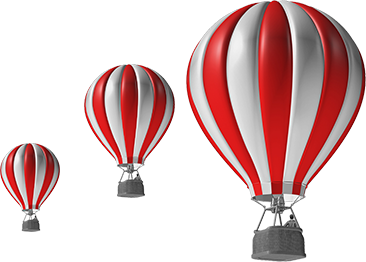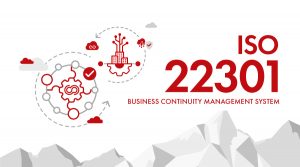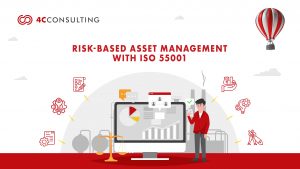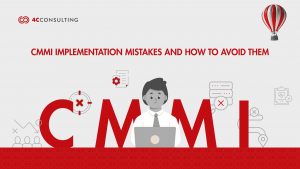
5S Method: Comprehensive Understanding and Importance of its Implementation
16th Oct, 2019
“A company that cannot successfully implement the 5S’s cannot expect to effectively integrate JIT, re-engineering or any other large scale change.”
–Hiroyuki Hirano, Japanese Engineering Educator
In the increasing competition and ever-changing economy, companies in the manufacturing industry can survive and thrive only if they can adapt to change. Hence, in order to achieve significant growth and maximum revenue, organizations must undergo periodical changes in their business strategies and manufacturing management practices. And also make modifications or take necessary actions in a way that they result into increase in the efficiency of the manufacturing process, reduce waste and cost and create value. A foolproof way to ensure the same is to first implement the 5S process as a part of lean methodology. 5S was popularized by Taiichi Ohno, Toyota engineer who is also known as the Father of 5S.
What is 5S?
5S is a Japanese methodology that is now largely used mainly by manufacturing industries across the world with the goal of achieving a workspace that is organized, clean, maintained and safe, which eventually helps in increasing output. It is a strategic and standardized process that essentially focuses on visual management starting from the floor to operational manuals.
.
DRIVING OPERATIONAL EXCELLENCE THROUGH 5S IMPLEMENTATION
The 5S methodology is rooted in lean management principles and is known for its ability to bring discipline, efficiency, and clarity into the workplace. The foundation of 5S lies in creating an environment where everything has a purpose, place, and process. It facilitates a workplace that not only looks clean but functions efficiently through continuous monitoring and improvement.
The 5S meaning revolves around building workplace habits that prioritize order, cleanliness, and productivity for long-term success. Over time, the consistent practice of 5S can result in dramatic improvements in workplace safety, equipment lifespan, employee morale, and process reliability. The 5S full form includes five foundational Japanese terms—each representing a step in the workplace organization process.
Seiri (Sort)
Keep the essentials and eliminating the unnecessary items.
This principle is all about decluttering the workspace by separating what is necessary from what is not. Items that are not frequently used, outdated, or irrelevant to current tasks should be removed or relocated. By sorting effectively, teams reduce the time wasted in locating tools or documents, improve visibility of key resources, and eliminate obstacles that hinder workflow. A well-sorted environment is not just cleaner—it improves safety and reduces inventory handling errors. It also encourages employees to assess their tasks critically and focus only on value-adding activities. Over time, this leads to better decision-making and sharper process control.
Example: Removing outdated files and unused equipment from an office workspace to increase usable space and improve efficiency.
Seiton (Set in order)
Allot a place for each item and keep them in place. Keep it organized. This stage involves the logical arrangement of tools, equipment, and materials so that everything is easy to find, use, and return. It emphasizes visual control through labelling, floor marking, shadow boards, and designated storage areas. The idea is to minimize time lost in searching or misplacing items, which can often disrupt workflows. By establishing clear positions for every object, team members develop good habits and rely less on memory or guesswork. This systematic order improves speed, accuracy, and accountability across functions. In high-pressure environments, it ensures fast, error-free responses.
Example: Labelling drawers and shelves for specific tools or files in a production or office setup.
“Curious how companies like Omax Cotspin used 5S to streamline operations? Read the full case study here.”
Seiso (Sweep/Shine)
Clean the workspace. Keep it clean and tidy.
Beyond mere aesthetics, this step focuses on identifying hidden issues such as leaks, wear, or damaged parts during cleaning. It transforms cleaning into an inspection routine that builds employee accountability and pride in their workspace. Cleanliness promotes operational safety, prevents defects caused by contamination, and boosts equipment longevity. A “shining” workplace is also psychologically uplifting—encouraging employees to maintain standards and engage more positively with their environment. Regular cleaning schedules and assigned responsibilities ensure this doesn’t become a one-time activity.
Example: Daily cleaning routines in a food processing plant to ensure hygiene and detect anomalies like leaks or spills.
Seiketsu (Standardize)
Establish standard as in identical workplace areas for all. Standardization ensures that the first three S’s—Sort, Set in order, and Shine—are sustained through agreed protocols. It includes establishing visual cues, documented procedures, standard work instructions, and schedules that guide daily operations. By maintaining consistency across departments and shifts, it becomes easier to detect deviations and maintain a uniform workflow. Employees know exactly what’s expected, reducing training time and improving efficiency. It also simplifies audits, encourages continuous improvement, and facilitates onboarding of new staff. A visually standard workplace drives operational discipline.
Example: Implementing color-coded systems for waste bins, cleaning zones, or documentation across departments.
Shitsuke (Sustain)
Maintain and review the implemented process. Keep it safe. Sustain is the cultural backbone of 5S, as it ensures long-term commitment to the established system. It calls for regular audits, performance evaluations, and continuous training to embed
5S into everyday routines. This stage focuses on mindset change—developing habits that promote consistency, discipline, and self-management. Organizations can support this through incentive programs, visual dashboards, and empowering teams to lead their own improvements. Without this stage, gains from the previous steps may quickly fade. Sustaining 5S is about turning discipline into culture and improvement into reflex.
Example: Incorporating 5S audits into regular performance reviews and rewarding teams for adherence.
WHAT ARE THE TYPES OF WASTE YOU CAN ELIMINATE?
Waste exists almost everywhere. Waste is what adds to the costs without providing any value to the customer. Thus, you must make conscious changes to eliminate the waste. We have compiled a list of waste in manufacturing as well as services that :
For Manufacturing
- Defects
- Transportation
- Overproduction
- Waiting
- Processing
- Movement
- Excessive Inventory
- Unexplored employee creativity
.
For Services
- Errors in Documents
- Transport of Documents
- Doing Work Not Requested
- Waiting for the Next Step
- Process Steps & Approvals
- Unnecessary Motion
- Backlog of Work
To eliminate waste from all the sections in the organization could be challenging especially if your organization is medium or large in size. However, you can begin from making primary level modifications in your existing process with the help of 5S consultants and experts to leverage all the benefits of 5S.
.
Why is the 5S Method Important?
The 5S is the first and foremost step in the lean philosophy implementation, an elaborate plan for a much bigger goal that is utilized to eliminate waste, remove unnecessary steps, reduce costs, increase productivity and observe high quality to ultimately increase revenue.
When the 5S methodology does not directly bring value to the business, it surely plays a vital role in increasing the value and growth. Having been proven as an integral tool to improve the workplace environment, it is highly effective to reduce waste and increase efficiency in the manufacturing process. Hence, even though the 5S method is fruitful, it must not be the ultimate goal since it is a driving force of the entire lean management in the company. It would be best to make the practice a part of your culture and leverage it to foster consistent improvement.
“Looking to improve efficiency and reduce workplace clutter? See how our 5S consultants can help you implement a customized strategy.”
Explore – STEP-BY-STEP GUIDE TO IMPLEMENT 5S METHODOLOGY IN YOUR ORGANIZATION.
The key benefits of implementing 5S in a workplace are:
- Increased Productivity: By creating an organized and clutter-free workspace, employees can locate tools and materials faster, reducing time spent on non-value tasks. This enables smoother workflows, minimizes distractions, and allows teams to focus on core activities. The result is a measurable boost in output and job performance.
- Reduced Waste: The 5S system actively identifies and eliminates various forms of waste—be it excess inventory, motion, or unused materials. This leads to optimized use of space and resources while reducing costs. Clear visibility in processes makes it easier to avoid overproduction and unnecessary steps.
- Better Maintenance: Regular cleaning and inspections under the “Shine” step help in early detection of wear, leaks, or equipment malfunctions. This proactive care prevents breakdowns and extends the life of machines. Maintenance becomes a daily habit rather than a reactive response.
- Lessened Downtime: With everything in its place and regular checks in place, unexpected breakdowns and delays reduce significantly. Efficient layouts, quick access to tools, and preventive care help avoid production halts. Teams can address issues faster and stay focused on operations.
- Increased Safety: A clean, well-ordered environment reduces risks like slips, falls, or equipment accidents. Visual cues, floor markings, and clear pathways contribute to a safer workplace. Safety
hazards are easier to spot and eliminate, fostering a secure environment for all. - Increased Efficiency: Standardized procedures and clearly defined roles lead to faster task execution with fewer errors. Employees don’t waste time figuring out what to do or where to find what they need. This smooth, predictable rhythm enhances overall workflow and consistency.
- Increase in the Workplace Morale and Customer Satisfaction: An orderly and pleasant work environment improves employee morale, promoting pride and accountability. Motivated teams tend to perform better, make fewer mistakes, and deliver quality outcomes. These improvements naturally translate into better service and higher customer satisfaction. Ultimately, the 5S system serves as a foundation for 5S quality management—boosting both internal performance and external service standards.
.
Where can the 5S be Applied?
The 5S can be applied in any type of work environment. From a small retail store to hospitals, factories, telecom companies, airports, corporate offices, restaurants etc. So, no matter which industry you are integrated with, you can implement 5S to eliminate waste and get the best output.
In fact, the flexibility of the 5S methodology allows it to scale across industries and departments – physical or digital, large or small.
- In manufacturing, 5S is used to organize tools, reduce machine downtime, and improve production line efficiency.
- In hospitals, it helps ensure medical equipment is clean, properly placed, and ready for use in emergencies.
- In IT companies, 5S can apply to desk organization and also extend to digital file structuring for faster access and fewer errors.
- In warehouses, it enhances inventory visibility, prevents misplacement of goods, and speeds up order fulfilment.
- In restaurants and kitchens, it ensures hygiene compliance, easy access to utensils, and consistent food prep workflows.
Even in educational institutions, 5S supports cleaner labs, organized classrooms, and efficient storage for materials. Its universal applicability makes 5S a foundational tool for quality and efficiency across any work setting.
“From shop floors to spreadsheets, 5S adapts across workspaces. Explore how it applies in digital environments in our blog on 5S in digital workplaces.”.
HOW 4C HELP ORGANIZTAION IMPLEMENT 5S?
Qualified and certified professionals at 4C have firsthand experience with implementing the 5S method perfectly and help in maximizing benefits while eliminating the waste completely. We also provide 5S certification as well as 5S audit certification with training as well as solution to ensure quality management, cost-effectiveness, and efficiency in your organization.
Having worked with clients such as Arvind textile, Olam, Omax Cotspin, Sarla Performance Fibers Ltd., Ashapura Minechem, Adani Transmission, Petrotec and many more, we have garnered valuable insights and expertise that help us implement the 5S most efficiently.
“Need expert support to launch 5S in your organization? Contact us today for a free consultation with our implementation experts.”
FREQUENTLY ASKED QUESTIONS:.
What does 5S stand for?
5S stands for five Japanese words that describe the steps of a systematic workplace organization method:
- Seiri (Sort)
- Seiton (Set in order)
- Seiso (Shine)
- Seiketsu (Standardize)
- Shitsuke (Sustain)
These principles aim to create and maintain an organized, clean, and efficient work environment—contributing to productivity, safety, and continuous improvement.
What is 1S, 2S, 3S, 4S, 5S in industry?
In industrial environments, the 5S methodology is often implemented step-by-step:
- 1S – Sort (Seiri): Remove unnecessary items.
- 2S – Set in Order (Seiton): Organize and arrange essentials.
- 3S – Shine (Seiso): Clean the workspace thoroughly.
- 4S – Standardize (Seiketsu): Create uniform standards and schedules.
- 5S – Sustain (Shitsuke): Foster discipline and audit adherence to maintain improvements.
Each “S” builds on the previous one, and together they form the foundation for Lean manufacturing and operational excellence.
What is the 5 principle of 5S?
The five principles of 5S are:
- Sort: Identify and eliminate what’s unnecessary.
- Set in Order: Ensure everything has a designated place.
- Shine: Clean regularly and detect early signs of problems.
- Standardize: Establish norms and consistency across tasks and areas.
- Sustain: Embed 5S into the culture for long-term success.
These principles encourage consistency, quality, safety, and team ownership across all business processes.
What are the 5S of Kaizen?
5S is considered a foundational pillar of Kaizen, the Japanese philosophy of continuous improvement. The 5S framework complements Kaizen by:
- Reducing waste
- Improving workflow
- Enhancing discipline
- Standardizing operations
Creating a culture of continuous improvement By implementing 5S before other Kaizen strategies, organizations can build a strong baseline for more advanced Lean and Six Sigma methodologies.
What are the 5S in the workplace?
The 5S in the workplace refer to five core practices that create a clean, organized, and efficient work environment:
- Sort (Seiri): Remove unnecessary items.
- Set in Order (Seiton): Organize remaining items logically.
- Shine (Seiso): Clean and inspect the workspace regularly.
- Standardize (Seiketsu): Establish procedures to maintain order and cleanliness.
- Sustain (Shitsuke): Build discipline and routine checks to uphold the system.
By adopting these principles, workplaces reduce waste, improve safety, and boost overall productivity.
What is the 5S concept?
The 5S concept is a Lean methodology developed in Japan to improve workplace organization and efficiency. It stands for Sort, Set in Order, Shine, Standardize, and Sustain. This systematic approach helps companies maintain quality, eliminate clutter, reduce downtime, and cultivate a culture of continuous improvement. The 5S concept is widely used across manufacturing, services, healthcare, IT, and even education sectors due to its practical and visual nature.
What are the 5S of implementation?
The 5S of implementation are the five core Japanese principles used to structure a productive and efficient workspace. They are:
- Seiri (Sort): Eliminate unnecessary items.
- Seiton (Set in Order): Organize tools and materials.
- Seiso (Shine): Clean and inspect the workplace.
- Seiketsu (Standardize): Establish uniform procedures.
- Shitsuke (Sustain): Maintain and continuously improve the system.
Together, these steps form a foundation for Lean operations and continuous improvement.
What are the steps in implementing the 5S plan?
Implementing 5S typically follows these key steps:
- Awareness and Training: Educate teams on 5S principles and benefits.
- Assessment: Evaluate current conditions and identify areas for improvement.
- Execution: Apply Sort, Set in Order, and Shine systematically.
- Standardization: Create checklists, SOPs, and visual controls.
- Sustainability: Conduct audits, reviews, and feedback sessions to ensure adherence.
- Continuous Improvement: Encourage team ownership and refine the process regularly.
How can you apply 5S in your workplace?
To apply 5S in your workplace:
- Start with team training and explain the purpose of 5S.
- Perform a workspace audit to identify clutter and inefficiencies.
- Begin by sorting out unnecessary items, then organize and label everything.
- Set a cleaning schedule, define visual controls, and introduce standard procedures.
- Finally, monitor regularly and promote a culture of discipline through rewards, feedback, and periodic audits.
With consistent effort, 5S becomes part of the organizational culture and drives lasting operational excellence.



